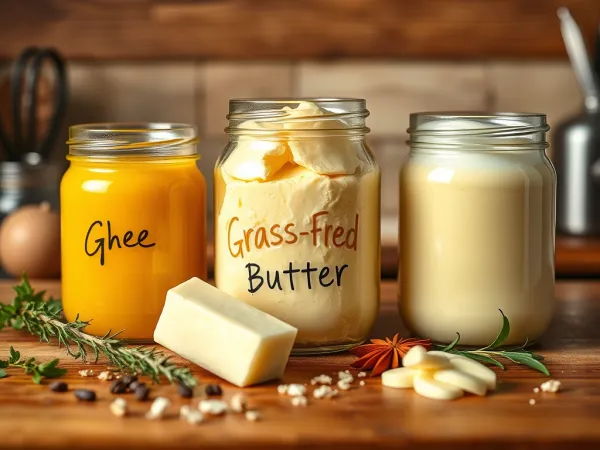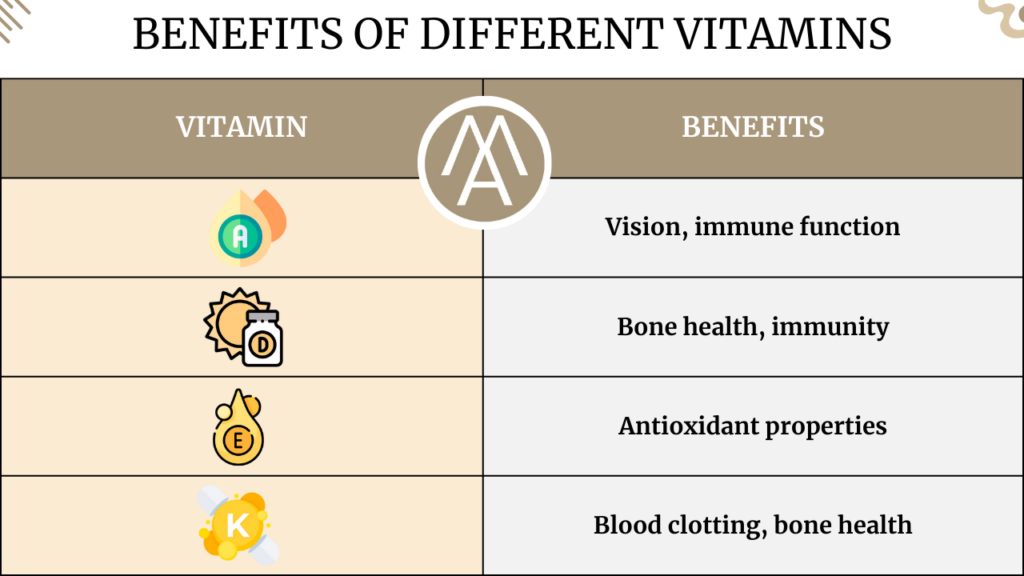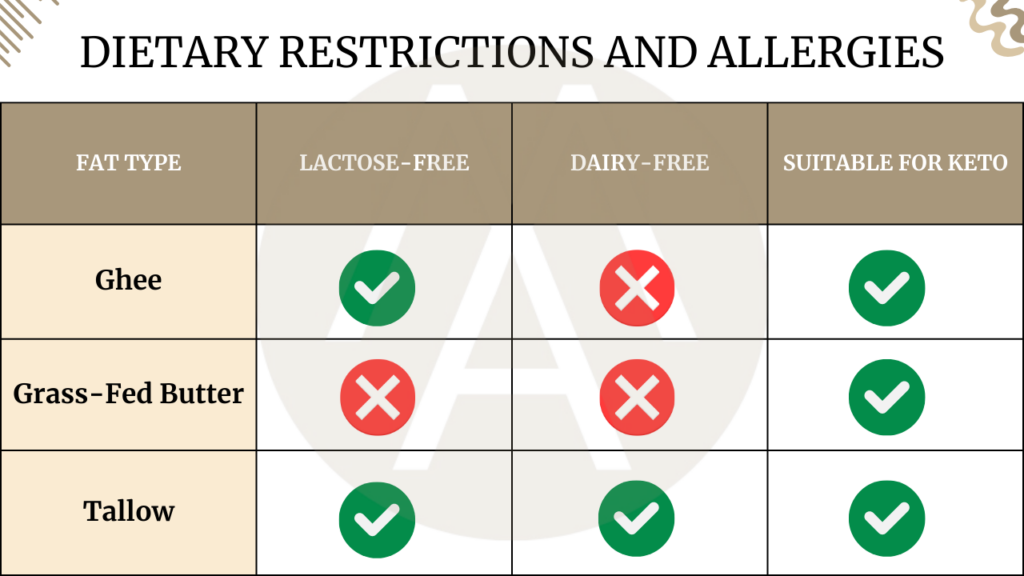Physical Address
304 North Cardinal St.
Dorchester Center, MA 02124
Physical Address
304 North Cardinal St.
Dorchester Center, MA 02124

Transform your meals with ghee, grass-fed butter, or tallow—each packed with flavor and health benefits! But which is best for your cooking and wellness goals? Discover their secrets, from smoke points to nutrients, and make the perfect choice for every dish. Click now to upgrade your kitchen game!
Ghee, grass-fed butter, and tallow for cooking are all excellent, but choosing between them is hard. Am I right? With so many brilliant options available these days, knowing which fat best serves your health or culinary needs can be confusing.
Imagine taking your meals from bland to grand with rich, flavorful fats that go from not only great tasting but to actually giving a boost to your health. The right choice, however, can make all the difference. But how do you know which one to pick?
In this blog, we deep-dive into the world of ghee, grass-fed butter, and tallow to learn their properties, health benefits, and perfect kitchen uses. You will get enough knowledge by the end to choose better according to your needs in living and kitchen use.
Now, let’s start finding out which golden elixirs of flavor and nutrition belong in a place in my pantry!
Ghee, grass-fed butter, and tallow are all animal-derived fats with unique characteristics. Ghee is clarified butter originating from India1, while grass-fed butter comes from cows grazing on pasture. Tallow is rendered beef fat, traditionally used in cooking and soap-making.
| Fat Type | Saturated Fat | Vitamins | CLA |
|---|---|---|---|
| Ghee | High | A, E, K | Low |
| Grass-Fed Butter | High | A, D, K2 | High |
| Tallow | High | A, D, E | Moderate |
Ghee offers a rich source of fat-soluble vitamins, including A, D, E, and K. These nutrients play a key role in the body:

Ghee is the only dairy product option in case of lactose intolerance5, as the preparation process removes milk solids and thus is virtually lactose-free. This relieves a lot of the digestion stress you might encounter in the other options
Grass-fed butter has more omega-3 fatty acids than conventional butter. This is an essential nutrient for heart and brain health. Grass-fed butter also has more vitamin K26, which helps with calcium absorption and bone health.
| Nutrient | Grass-Fed Butter | Conventional Butter |
|---|---|---|
| Omega-3 | Higher | Lower |
| Vitamin K2 | Higher | Lower |
It is pretty hard to find any higher levels of CLA than in grass-fed butter. To give you an idea: grass-fed meat and grass-fed dairy contain 500% more CLA’s than conventional grain-fed cows. This particular fatty acid has some pretty cool potential benefits, including7:
Tallow is a very saturated fat and, therefore, has been a great choice for cooking stably when going well into the high-temperature zones. You will realize that it possesses a smoke point of about 420°F at 215°C8, excellent in frying and sautéing.
Here’s a comparison of smoke points:
| Fat Type | Smoke Point |
|---|---|
| Tallow | 400°F (204°C) |
| Ghee | 485°F (252°C) |
| Butter | 350°F (177°C) |
You will be glad to know that tallow is packed with fat-soluble vitamins. These essential nutrients will provide a host of health benefits, which include9:

When comparing ghee and grass-fed butter, you’ll find some key differences:
| Component | Ghee | Grass-Fed Butter |
|---|---|---|
| Milk Solids | Removed | Present |
| Lactose | Trace amounts | Higher |
| Water Content | Minimal | Higher |
| Smoke Point | Higher (485°F) | Lower (350°F) |
Your choice between ghee and grass-fed butter depends upon your cooking needs. Ghee is best when it comes to high-heat cooking and offers a longer shelf life, while grass-fed butter is good in baking and low-heat cooking, adding great richness and creaminess to dishes.
| Nutrient | Grass-Fed Butter | Tallow |
|---|---|---|
| Vitamin A | Higher | Lower |
| Vitamin K2 | Present | Absent |
| CLA | Higher | Lower |
| Omega-3 | Higher | Lower |
Grass-fed butter is excellent to bake or cook on low heat due to its savory and creamy flavor; tallow is really excellent for frying and searing because of its high smoke point. Which of these two depends on what your specific culinary needs and health goals are.
Ghee and tallow are both animal-derived fats that differ in their composition and health effects. Ghee contains butyric acid and CLA, which support gut health and immunity, while tallow is rich in palmitic and stearic acids, providing energy and helping with cellular activity; some of these fatty acids can lower cholesterol and affect glucose metabolism differently10.
| Nutrient | Ghee | Tallow |
|---|---|---|
| Vitamins | A, D, E, K | D |
| Fatty Acids | CLA, Butyric Acid | Palmitic, Stearic |
| Smoke Point | Higher | Lower |
Your choice between ghee and tallow depends on your specific dietary needs and cooking preferences. Ghee offers versatility and a higher smoke point, while tallow provides a unique flavor profile for certain dishes, such as roasting or frying potatoes, Yorkshire puddings, or even baking cakes.
When choosing between ghee, grass-fed butter, and tallow, dietary restrictions will be a big factor. Most lactose-intolerant people can use ghee, while those on completely dairy-free diets will want to stick with tallow.
If you have no restrictions, grass-fed butter offers a balance of nutrients and flavor.

Your cooking method will determine which fat you use. Ghee and tallow have high smoke points, making them perfect for high-heat cooking. Grass-fed butter is more suitable for low to medium-heat cooking and baking. Consider the following:
When it comes to culinary applications, each fat has its strengths. Here’s a quick comparison:
| Fat Type | Smoke Point | Flavor Profile | Best Uses |
|---|---|---|---|
| Ghee | High | Nutty, rich | High-heat cooking, baking |
| Grass-Fed Butter | Medium | Creamy, slightly sweet | Sautéing, baking, finishing |
| Tallow | High | Beefy, savory | Frying, roasting meats |
From a health perspective, all three are beneficial in different ways:
Your choice depends on your dietary needs and health goals. Consider consulting a nutritionist for personalized advice.
It depends on one’s particular goals for health and personal dietary choice: ghee provides a very high smoke point, and highly concentrated nutrients, while grass-fed butter has great flavor and higher levels of omega-3 fatty acids; tallow provides a great amount of stability in the product, with its nutrient profile not very different from other saturated fats.
As you work these healthy fats into your diet, remember to consider cooking methods, taste preferences, and nutritional needs. Whether you’re sautéing vegetables, spreading them on toast, or using them in baked goods, each of these fats has a place in a balanced, wholesome diet.
When comparing tallow and ghee, each has its own pros and cons:
| Aspect | Tallow | Ghee |
|---|---|---|
| Source | Beef fat | Clarified butter |
| Flavor | Beefy, savory | Nutty, buttery |
| Smoke point | Higher (416°F) | High (485°F) |
| Nutrients | Rich in vitamins A, D, E, K | Contains CLA, butyrate |
Your choice depends on your dietary needs and preferences. Tallow is excellent for high-heat cooking and adds a rich flavor to savory dishes. Ghee, on the other hand, is more versatile and can be used in both sweet and savory recipes.
Both ghee and grass-fed butter come with their own health benefits:
If you’re lactose intolerant, ghee could be the better choice for you. On the other hand, if you can handle dairy, grass-fed butter is your best bet thanks to the nutritional profile.
The choice between beef tallow and grass-fed butter really depends on your individual needs:
When deciding between these two healthy fats, consider your cooking methods, dietary requirements, and personal taste preferences. Both can fit into a balanced, nutrient-rich diet.
Comments are closed.
[…] Ghee vs. Grass-Fed Butter vs. Tallow – Which Is Best for You? […]